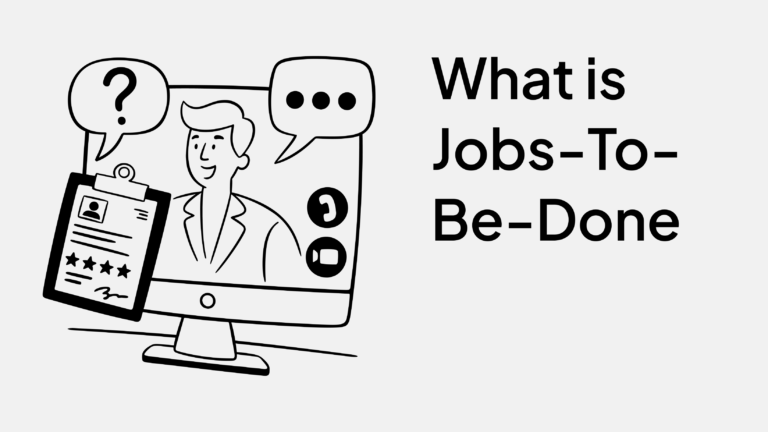Introduction to Product Marketing Messaging Framework
A well-defined product marketing messaging framework plays a critical role in the success of any business. This framework serves as the foundation for effectively communicating the value of your products or services to your target audience, ultimately driving engagement, conversions, and long-term customer loyalty.
In this article, I will guide you through the key strategies and best practices for crafting an effective product marketing messaging framework. It will help you stand out in a crowded marketplace and achieve your business goals.
Importance of a Well-Defined Messaging Framework
A robust product marketing messaging framework is essential for several reasons:
- Clarity and Consistency: A clear and consistent messaging framework ensures that your brand’s unique value proposition is communicated effectively across all marketing channels, from your website and social media to sales presentations and customer communications.
- Differentiation: A well-crafted messaging framework helps you differentiate your products or services from the competition, highlighting the unique benefits and features that make your offering the best choice for your target audience.
- Stronger Customer Engagement: Effective messaging resonates with your target audience, fostering deeper engagement and building trust, which ultimately leads to increased conversions and customer loyalty.
- Alignment and Efficiency: A cohesive messaging framework aligns your entire organization, from marketing and sales to customer support, ensuring that everyone is on the same page and delivering a consistent brand experience.
Key Components of a Product Marketing Messaging Framework
An effective product marketing messaging framework typically consists of the following key components:
- Target Audience and Buyer Personas: Clearly defining your target audience and developing detailed buyer personas is the foundation for crafting relevant and compelling messaging.
- Key Value Propositions and Messaging Pillars: Identifying the core benefits and unique features of your products or services, as well as the key messaging pillars that support your value proposition, is crucial for creating a strong messaging framework.
- Messaging Statements: Crafting concise, impactful messaging statements that capture the essence of your value proposition and resonate with your target audience is the heart of your messaging framework.
- Segmentation and Tailored Messaging: Tailoring your messaging to different customer segments, based on their unique needs, pain points, and buying behaviors, ensures that your communications are highly relevant and effective.
- Testing and Refinement: Continuously testing and refining your messaging framework, based on customer feedback and performance data, is essential for ensuring its ongoing effectiveness.
Defining Your Target Audience and Buyer Personas
The first step in crafting an effective product marketing messaging framework is to clearly define your target audience and develop detailed buyer personas. This involves conducting thorough market research, analyzing customer data, and identifying the key characteristics, pain points, and buying behaviors of your ideal customers.
By deeply understanding your target audience, you can create messaging that resonates with them on a personal level, addressing their specific needs and pain points and positioning your products or services as the ideal solution.
To develop your buyer personas, consider factors such as:
- Demographic information (age, gender, location, income, etc.)
- Psychographic traits (values, interests, lifestyle, etc.)
- Behavioral patterns (buying habits, decision-making process, etc.)
- Pain points and challenges
- Goals and aspirations
Organizing this information into detailed buyer persona profiles will provide a solid foundation for crafting your messaging framework.
Identifying Key Value Propositions and Messaging Pillars
With a clear understanding of your target audience, the next step is to identify your key value propositions and the messaging pillars that support them. This involves thoroughly analyzing your products or services, their unique features, and the benefits they provide to your customers.
Start by answering questions such as:
- What are the core benefits and unique selling points of your offerings?
- How do your products or services solve your customers’ pain points or help them achieve their goals?
- What features or capabilities set your offerings apart from the competition?
- What are the key differentiators that make your brand the preferred choice for your target audience?
Once you have identified your key value propositions, organize them into a set of messaging pillars that will form the foundation of your product marketing messaging framework. These pillars should be the central themes that guide the development of your messaging statements and support your overall value proposition.
Crafting Compelling Messaging Statements
With your target audience and value propositions defined, you can now begin crafting the core messaging statements that will be the heart of your product marketing messaging framework. These statements should be concise, impactful, and designed to resonate with your target audience.
When developing your messaging statements, consider the following best practices:
- Keep it Concise: Aim for short, punchy statements that quickly convey your value proposition and key benefits.
- Focus on Benefits: Emphasize the tangible benefits and outcomes your customers can expect, rather than just listing features.
- Speak Their Language: Use language and terminology that resonates with your target audience, addressing their specific needs and pain points.
- Differentiate from the Competition: Highlight what makes your offerings unique and superior to the competition.
- Evoke Emotion: Craft messages that tap into the emotions and aspirations of your target audience, creating a strong emotional connection.
By crafting a set of compelling, customer-centric messaging statements, you can effectively communicate the value of your products or services and set the stage for successful marketing campaigns.
Tailoring Messaging for Different Customer Segments
While a consistent, overarching messaging framework is essential, it’s also important to tailor your messaging to different customer segments. This ensures that your communications are highly relevant and resonate with the unique needs and buying behaviors of each target group.
To effectively tailor your messaging, consider factors such as:
- Industry or Vertical: Adjust your messaging to address the specific pain points and challenges faced by customers in different industries or verticals.
- Company Size or Lifecycle Stage: Adapt your messaging to meet the unique needs of small businesses, enterprises, startups, or established organizations.
- Buyer Persona Attributes: Craft messaging that speaks directly to the demographics, psychographics, and behavioral patterns of each buyer persona.
- Buying Stage: Align your messaging with the customer’s position in the buying journey, whether they are in the awareness, consideration, or decision-making stage.
By developing a flexible messaging framework that can be easily tailored to different customer segments, you can maximize the impact of your product marketing efforts and drive stronger engagement and conversions across your target audience.
Testing and Refining Your Messaging Framework
Crafting an effective product marketing messaging framework is an iterative process that requires continuous testing and refinement. As you implement your messaging across various marketing channels, it’s essential to monitor its performance and gather feedback from your target audience.
Some key strategies for testing and refining your messaging framework include:
- A/B Testing: Conduct A/B tests to compare the performance of different messaging variations and identify the most effective approaches.
- Customer Surveys and Interviews: Gather direct feedback from your customers to understand how they perceive your messaging and identify areas for improvement.
- Analyze Performance Data: Closely monitor the performance metrics of your marketing campaigns, such as click-through rates, conversion rates, and customer engagement, to assess the effectiveness of your messaging.
- Competitive Analysis: Monitor the messaging and positioning of your competitors to identify opportunities for differentiation and refinement of your own framework.
By continuously testing and refining your messaging framework, you can ensure that it remains relevant, impactful, and aligned with the evolving needs and preferences of your target audience.
Implementing Your Messaging Framework Across Marketing Channels
Once you have developed a robust product marketing messaging framework, the next step is to consistently implement it across all your marketing channels and touchpoints. This ensures that your brand’s value proposition and messaging are cohesive and recognizable, no matter where your customers encounter your products or services.
Some key channels to consider when implementing your messaging framework include:
- Website and Digital Content: Ensure that your website, blog, and other digital content clearly convey your messaging.
- Social Media: Craft social media posts and campaigns that align with your messaging framework.
- Advertising and Promotional Materials: Incorporate your messaging into all advertising, brochures, and other promotional assets.
- Sales Presentations and Collateral: Ensure that your sales team is equipped with messaging that supports your value proposition.
- Customer Communications: Align your messaging across all customer-facing communications, from email campaigns to customer support interactions.
By consistently implementing your messaging framework across all marketing touchpoints, you can create a unified brand experience that reinforces your value proposition and builds trust with your target audience.
Measuring the Effectiveness of Your Messaging Framework
To ensure that your product marketing messaging framework is delivering the desired results, it’s essential to establish clear metrics and key performance indicators (KPIs) to measure its effectiveness. This will help you identify areas for improvement and make data-driven decisions to optimize your messaging over time.
Some key metrics to consider when measuring the impact of your messaging framework include:
- Brand Awareness: Track metrics such as website traffic, social media engagement, and search engine visibility to gauge the reach and recognition of your brand.
- Lead Generation and Conversion Rates: Monitor the performance of your marketing campaigns, such as the number of leads generated and the conversion rate from leads to customers.
- Customer Engagement: Analyze metrics like email open rates, click-through rates, and customer retention to assess the level of engagement with your messaging.
- Sentiment and Feedback: Gather and analyze customer feedback, reviews, and sentiment data to understand how your target audience perceives your messaging and brand.
By regularly reviewing and analyzing these metrics, you can identify areas of strength and opportunities for improvement within your messaging framework, ensuring that it continues to drive meaningful results for your business.
Common Pitfalls to Avoid When Developing a Messaging Framework
While crafting an effective product marketing messaging framework can be a powerful strategy for driving business success, there are several common pitfalls to be aware of and avoid:
- Lack of Audience Understanding: Failing to thoroughly research and define your target audience can result in messaging that fails to resonate with your customers.
- Unfocused or Inconsistent Messaging: A disjointed or inconsistent messaging framework can confuse and alienate your audience, undermining your brand’s credibility.
- Overly Complicated or Jargon-Heavy Language: Using complex technical jargon or convoluted language can make your messaging inaccessible and unappealing to your target audience.
- Failure to Differentiate: If your messaging fails to clearly highlight what sets your products or services apart from the competition, you risk blending in with the crowd.
- Lack of Flexibility and Adaptability: A rigid messaging framework that cannot be tailored to different customer segments or adjusted over time may quickly become outdated and ineffective.
Be mindful of these common pitfalls and proactively addressing them, you can ensure that your product marketing messaging framework remains a powerful and effective tool for driving business growth.
Conclusion
Continuously monitoring and analyzing customer feedback and sentiment data allows you to stay in tune with your target audience’s evolving needs and preferences. By incorporating this feedback into your messaging framework, you can ensure that it remains relevant and impactful, driving long-term business growth. Additionally, regularly reviewing and refining your messaging strategy based on market trends and competitor analysis can help you maintain a competitive edge and effectively differentiate your brand.

